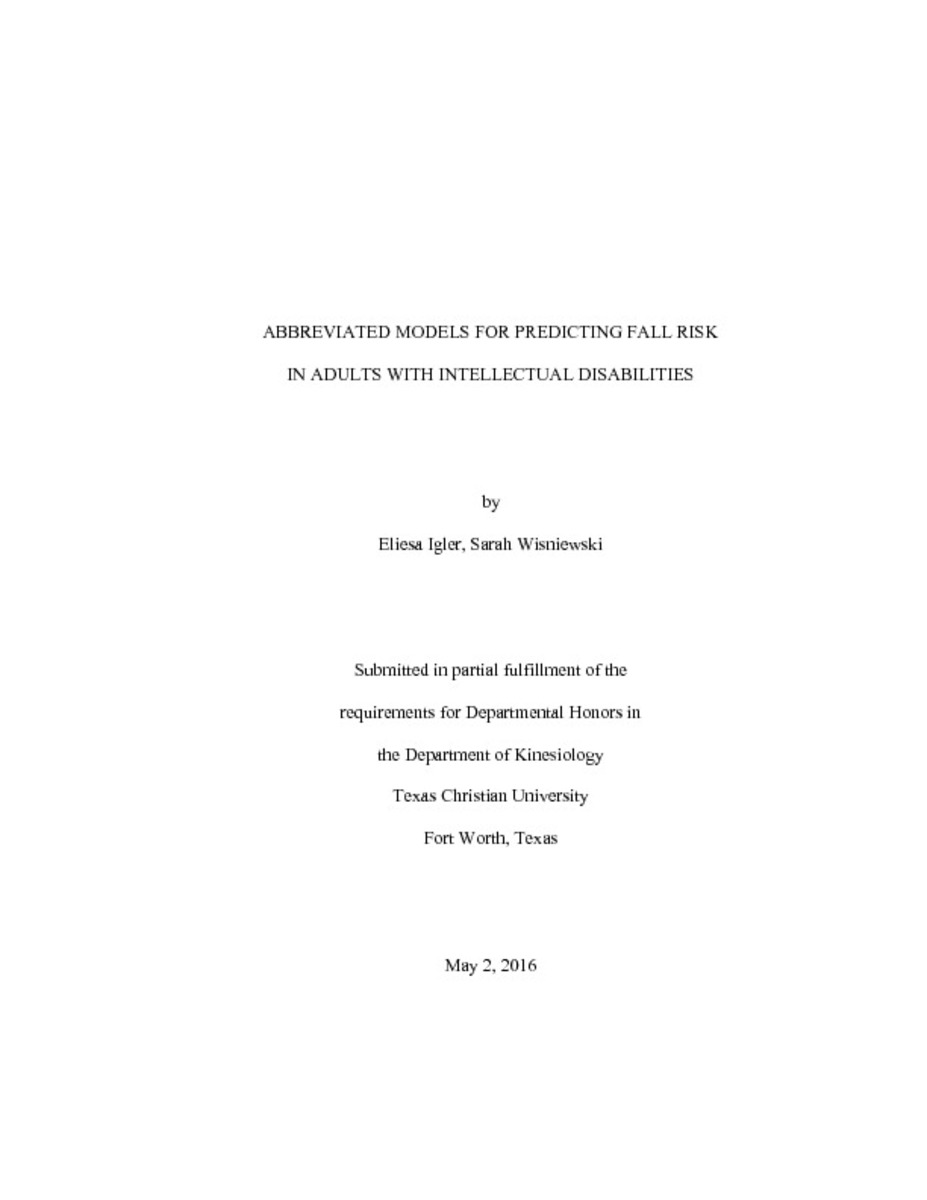Abbreviated models for predicting fall risk in adults with intellectual disabilitiesShow full item record
| Title | Abbreviated models for predicting fall risk in adults with intellectual disabilities |
|---|---|
| Author | Igler, Eliesa |
| Date | 2016 |
| Abstract | The purpose of this study is threefold: first, to describe anthropometric measures in individuals with Down syndrome (DS) and those with other intellectual disabilities (ID); second, to generate abbreviated methods for predicting fall risk in each population; and third, to assess the validity of these abbreviated models. Body mass index (BMI), Timed Up and Go (TUG), and Berg Balance Scale (BBS) scores from participants (n=49 (12 DS, 37 ID); ages 18-44) recruited at the 2015 Special Olympics Fall Classic in Bryan, Texas were used in stepwise linear regression analyses to produce three equations predicting fall risk: one for those specifically with DS, one for those with any other ID, and one combining the two subgroups. BBS item "standing on one foot" explained a majority of the variance in total BBS scores for both ID (R2=0.677) and DS (R2=.816) subgroups, as well as in the overall participant group (R2=.709). BMI (R2 = 0.14) and TUG (R2 = 0.27), however, only accounted for a small fraction of the variance. Validity was assessed on a separate group of participants (n=41 (9 DS, 32 ID); ages 18-45) recruited from the 2016 Special Olympics Winter Games in Austin, Texas. Using predictive equations based on "standing on one foot", minimal difference was found between actual and predicted BBS in the ID mean diff = -0.74%), DS (mean diff = -4.51%), and combined (mean diff = -1.38%) models. Results suggest these models are valid alternatives to more extensive fall risk assessments typically used in clinical settings. |
| Link | https://repository.tcu.edu/handle/116099117/11390 |
| Department | Kinesiology |
| Advisor | Esposito, Philip |
| Additional Date(s) | 2016-05-19 |
Files in this item
This item appears in the following Collection(s)
- Undergraduate Honors Papers [1478]
© TCU Library 2015 | Contact Special Collections |
HTML Sitemap



